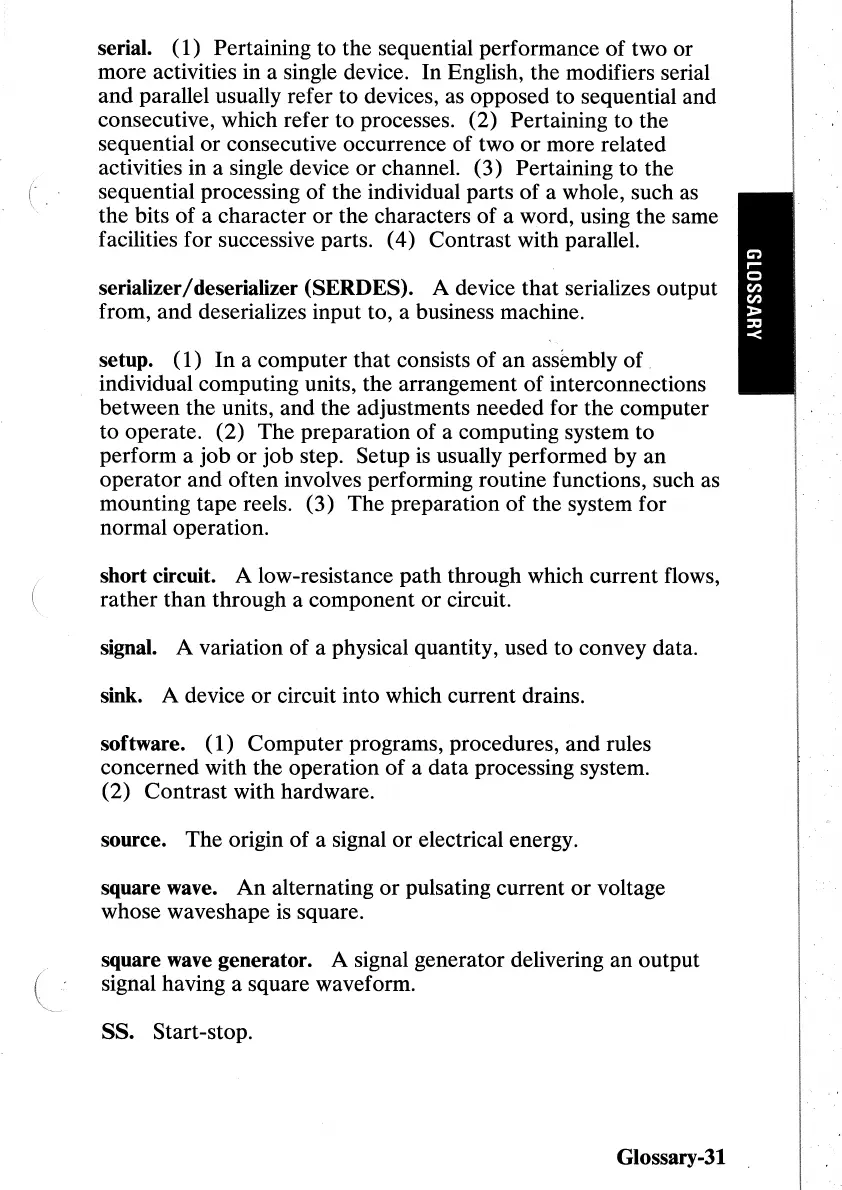serial. (1) Pertaining to the sequential performance
of
two or
more activities in a single device. In English, the modifiers serial
and
parallel usually refer to devices, as opposed to sequential and
consecutive, which refer to processes. (2) Pertaining to the
sequential
or
consecutive occurrence of two
or
more related
activities in a single device
or
channel. (3) Pertaining to the
sequential processing of the individual parts
of
a whole, such as
the bits
of
a character
or
the characters
of
a word, using the same
facilities for successive parts. (4) Contrast with parallel.
serializer/deserializer (SERDES). A device that serializes output
from,
and
deserializes input to, a business machine.
setup. (1)
In
a computer that consists
of
an
assembly
of
,
individual computing units, the arrangement
of
interconnections
between the units, and the adjustments needed for the computer
to operate. (2) The preparation
of
a computing system to
perform a job
or
job step. Setup
is
usually performed by
an
operator and often involves performing routine functions, such as
mounting tape reels. (3) The preparation
of
the system for
normal operation.
short circuit. A low-resistance path through which current flows,
rather
than
through a component
or
circuit.
signal. A variation
of
a physical quantity, used to convey data.
sink. A device
or
circuit into which current drains.
software. (1) Computer programs, procedures, and rules
concerned with the operation
of
a data processing system.
(2) Contrast with hardware.
source. The origin
of
a signal
or
electrical energy.
square wave.
An
alternating
or
pulsating current
or
voltage
whose waveshape is square.
square
wave
generator. A signal generator delivering an output
signal having a square waveform.
SSe
Start-stop.
Glossary-31 .
